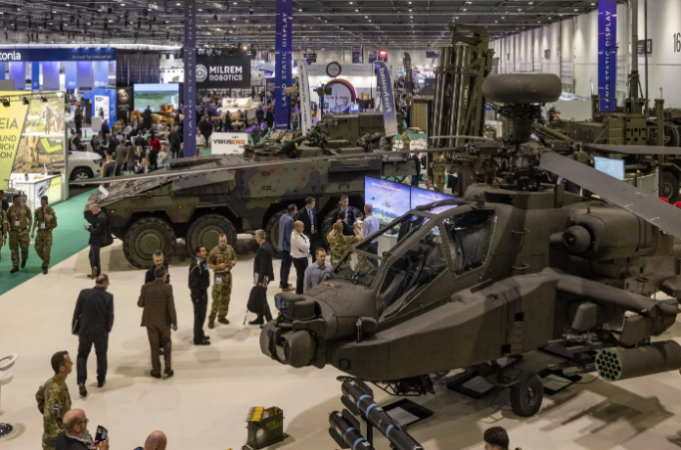
Stockholm: Following Russia's invasion of Ukraine in 2022, military spending in Europe increased at a record rate, reaching a level not seen since the Cold War, according to researchers studying international security on Monday.
According to the Stockholm International Peace Research Institute (SIPRI), the increase in Europe helped global military spending reach an eighth consecutive record of $2.24 trillion, or 2.2 percent of the global GDP.
The conflict in Ukraine, as well as the ongoing and escalating tensions between the US and China in East Asia, are what are driving up budget spending in Europe.
Also Read: Biden set to tap Julie Chavez Rodriguez as his 2024 campaign manager
The Russian invasion of Ukraine in 2022 caused Europe to spend 13% more on its armies than it had in the previous 12 months.
According to the think tank, the amount does not account for the high rates of inflation, which means that actual spending was actually even higher.
That marked the strongest increase in more than 30 years and a return to the level of spending in 1989, the year the Berlin Wall fell, measured in constant dollars. It is essentially at its highest point in Europe since the end of the Cold War, according to Tian.
Ukraine increased its spending on its own seven times to $44 billion, or thirty percent of its GDP. According to SIPRI, the nation has also benefited from international donations of weapons worth billions of dollars.
At the same time, estimates showed that Russian spending increased 9.2% last year. Even if you exclude the two at war nations, European spending has still increased significantly," Tian said.
Also Read: 123 crore gold stolen from the airport! Missing whistle-blower of officers
Spending in Europe has already increased by a third over the past ten years, reaching $480 billion in 2022. Over the following ten years, it is anticipated that the trend will intensify.
According to Tian, the continent could "potentially" experience growth rates comparable to 2022 for a number of years. Global military spending has increased since the 2000s after experiencing a sharp decline in the 1990s.
The increase was initially brought on by China's significant military expenditures; however, after Russia annexed Crimea in 2014, tensions with that country were once again high.
Only the US accounted for 39% of global military spending. More than half of the world's military spending was made up of these two countries along with China, which came in second place with 13 percent.
The next in line, Saudi Arabia, Russia, and India, all trailed far behind at 3.3%, 3.9%, and 3.6% respectively.
As a way to extend its reach beyond the South China Sea and, of course, to Taiwan, China has been investing more in its naval forces, according to Tian.
The trend is being followed by Australia, Indonesia, Malaysia, Vietnam, and even Japan.
Britain is the top spender in Europe, ranking sixth overall and contributing 3.1 percent of global spending, ahead of Germany and France, who each contributed 2.4 percent and 2.5 percent, respectively. These figures include donations to Ukraine.
Britain, behind the United States, is Ukraine's second-largest donor, and it "spends more than France and Germany." Additionally, it contributed more military aid than France and Germany, according to Tian.
Also Read: ISRO successfully took off the Polar Satellite Launch Vehicle C55 (PSLV-C55) task
Poland, the Netherlands, and Sweden were among the European nations that upped their military spending the most in the last ten years.
Some spending increases can also be explained by the increasing cost of modern weapons, as in the case of Finland's purchase of 64 US F-35 fighter jets last year.